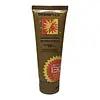What's inside
What's inside
 Key Ingredients
Key Ingredients

 Benefits
Benefits

 Concerns
Concerns

 Ingredients Side-by-side
Ingredients Side-by-side

Water
Skin ConditioningDibutyl Adipate
EmollientAlcohol Denat.
AntimicrobialEthylhexyl Salicylate
UV AbsorberDicaprylyl Carbonate
EmollientEthylhexyl Triazone
UV AbsorberPropylene Glycol
HumectantSilica
AbrasiveCyclopentasiloxane
EmollientCetearyl Alcohol
EmollientPoly C10-30 Alkyl Acrylate
Emulsion StabilisingPotassium Cetyl Phosphate
EmulsifyingBis-Ethylhexyloxyphenol Methoxyphenyl Triazine
Skin ConditioningPolyester-7
Skin ConditioningMethylene Bis-Benzotriazolyl Tetramethylbutylphenol
UV FilterXylitol
HumectantAcrylates/C12-22 Alkyl Methacrylate Copolymer
Neopentyl Glycol Diheptanoate
EmollientPhenoxyethanol
PreservativeGlyceryl Stearate
EmollientPEG-100 Stearate
Vp/Eicosene Copolymer
Sodium Polyacrylate
AbsorbentChlorphenesin
AntimicrobialPolyacrylate Crosspolymer-6
Emulsion StabilisingTriethanolamine
BufferingDecyl Glucoside
CleansingCeteareth-20
CleansingXanthan Gum
EmulsifyingPentylene Glycol
Skin ConditioningDisodium EDTA
Tocopheryl Acetate
AntioxidantGlycerin
HumectantTocopherol
AntioxidantAloe Barbadensis Leaf
MaskingButylene Glycol
Humectant1,2-Hexanediol
Skin ConditioningCamellia Sinensis Leaf Extract
AntimicrobialCaprylyl Glycol
EmollientCitric Acid
BufferingPotassium Sorbate
PreservativeSodium Benzoate
MaskingGlucose
HumectantSodium Hyaluronate
HumectantChondrus Crispus Extract
Skin ConditioningHydroxypropyltrimonium Hyaluronate
Hydrolyzed Hyaluronic Acid
HumectantSodium Acetylated Hyaluronate
HumectantHyaluronic Acid
HumectantHydrolyzed Sodium Hyaluronate
Skin ConditioningSodium Hyaluronate Crosspolymer
HumectantPotassium Hyaluronate
Skin ConditioningWater, Dibutyl Adipate, Alcohol Denat., Ethylhexyl Salicylate, Dicaprylyl Carbonate, Ethylhexyl Triazone, Propylene Glycol, Silica, Cyclopentasiloxane, Cetearyl Alcohol, Poly C10-30 Alkyl Acrylate, Potassium Cetyl Phosphate, Bis-Ethylhexyloxyphenol Methoxyphenyl Triazine, Polyester-7, Methylene Bis-Benzotriazolyl Tetramethylbutylphenol, Xylitol, Acrylates/C12-22 Alkyl Methacrylate Copolymer, Neopentyl Glycol Diheptanoate, Phenoxyethanol, Glyceryl Stearate, PEG-100 Stearate, Vp/Eicosene Copolymer, Sodium Polyacrylate, Chlorphenesin, Polyacrylate Crosspolymer-6, Triethanolamine, Decyl Glucoside, Ceteareth-20, Xanthan Gum, Pentylene Glycol, Disodium EDTA, Tocopheryl Acetate, Glycerin, Tocopherol, Aloe Barbadensis Leaf, Butylene Glycol, 1,2-Hexanediol, Camellia Sinensis Leaf Extract, Caprylyl Glycol, Citric Acid, Potassium Sorbate, Sodium Benzoate, Glucose, Sodium Hyaluronate, Chondrus Crispus Extract, Hydroxypropyltrimonium Hyaluronate, Hydrolyzed Hyaluronic Acid, Sodium Acetylated Hyaluronate, Hyaluronic Acid, Hydrolyzed Sodium Hyaluronate, Sodium Hyaluronate Crosspolymer, Potassium Hyaluronate
Water
Skin ConditioningOctocrylene
UV AbsorberEthylhexyl Methoxycinnamate
UV AbsorberTitanium Dioxide
Cosmetic ColorantBenzophenone-3
UV AbsorberPropylene Glycol
HumectantVp/Hexadecene Copolymer
Acrylates Copolymer
Butyl Methoxydibenzoylmethane
UV AbsorberDimethicone
EmollientCaprylyl Methicone
Skin ConditioningGlyceryl Stearate
EmollientCaprylic/Capric Triglyceride
MaskingC12-15 Alkyl Benzoate
AntimicrobialAluminum Starch Octenylsuccinate
AbsorbentAlumina
AbrasivePolyhydroxystearic Acid
EmulsifyingIsopropyl Titanium Triisostearate
EmollientPhenoxyethanol
PreservativeCaprylyl Glycol
EmollientTriethanolamine
BufferingTocopheryl Acetate
AntioxidantCaulerpa Racemosa Extract
AstringentTetrasodium EDTA
BHT
AntioxidantWater, Octocrylene, Ethylhexyl Methoxycinnamate, Titanium Dioxide, Benzophenone-3, Propylene Glycol, Vp/Hexadecene Copolymer, Acrylates Copolymer, Butyl Methoxydibenzoylmethane, Dimethicone, Caprylyl Methicone, Glyceryl Stearate, Caprylic/Capric Triglyceride, C12-15 Alkyl Benzoate, Aluminum Starch Octenylsuccinate, Alumina, Polyhydroxystearic Acid, Isopropyl Titanium Triisostearate, Phenoxyethanol, Caprylyl Glycol, Triethanolamine, Tocopheryl Acetate, Caulerpa Racemosa Extract, Tetrasodium EDTA, BHT
 Reviews
Reviews

Ingredients Explained
These ingredients are found in both products.
Ingredients higher up in an ingredient list are typically present in a larger amount.
Caprylyl Glycol is a humectant and emollient, meaning it attracts and preserves moisture.
It is a common ingredient in many products, especially those designed to hydrate skin. The primary benefits are retaining moisture, skin softening, and promoting a healthy skin barrier.
Though Caprylyl Glycol is an alcohol derived from fatty acids, it is not the kind that can dry out skin.
This ingredient is also used as a preservative to extend the life of products. It has slight antimicrobial properties.
Learn more about Caprylyl GlycolGlyceryl Stearate is a mix of glycerin and stearic acid.
It is used to stabilize the mixing of water and oil ingredients. By preventing these ingredients from separating, it can help elongate shelf life. It can also help thicken the product's texture.
As an emollient, it helps soften skin and supports barrier-replenishing ingredients.
In cosmetics, Glyceryl Stearate is often made from vegetable oils or synthetically produced.
This ingredient may not be fungal-acne safe
Fun fact: The human body also creates Glyceryl Stearate naturally.
Learn more about Glyceryl StearatePhenoxyethanol is a preservative that has germicide, antimicrobial, and aromatic properties. Studies show that phenoxyethanol can prevent microbial growth. By itself, it has a scent that is similar to that of a rose.
It's often used in formulations along with Caprylyl Glycol to preserve the shelf life of products.
Propylene Glycol is an odorless, colorless liquid. As a humectant, it helps skin retain moisture. It also aids in delivering active ingredients.
Another role of this ingredient is preventing a product from melting or freezing. Propylene glycol also adds antimicrobrial properties to a product, elongating product lifespan.
This ingredient is considered an organic alcohol and commonly added into both cosmetics and foods.
Those with sensitive skin or conditions may develop a rash when using this ingredient.
Learn more about Propylene GlycolTocopheryl Acetate is AKA Vitamin E. It is an antioxidant and protects your skin from free radicals. Free radicals damage the skin by breaking down collagen.
One study found using Tocopheryl Acetate with Vitamin C decreased the number of sunburned cells.
Tocopheryl Acetate is commonly found in both skincare and dietary supplements.
Learn more about Tocopheryl AcetateTriethanolamine is an emulsifier and pH adjuster. It is created using ethylene oxide and ammonia. This gives Triethanolamine a nitrogen core and a similar scent to ammonia.
As an emulsifier, it prevents ingredients from separating and enhances texture by adding volume to a product.
PH adjusters are common in cosmetic products. The pH of a product can affect the effectiveness of other ingredients. A product with a high pH may also irritate the skin.
Learn more about TriethanolamineWater. It's the most common cosmetic ingredient of all. You'll usually see it at the top of ingredient lists, meaning that it makes up the largest part of the product.
So why is it so popular? Water most often acts as a solvent - this means that it helps dissolve other ingredients into the formulation.
You'll also recognize water as that liquid we all need to stay alive. If you see this, drink a glass of water. Stay hydrated!
Learn more about Water